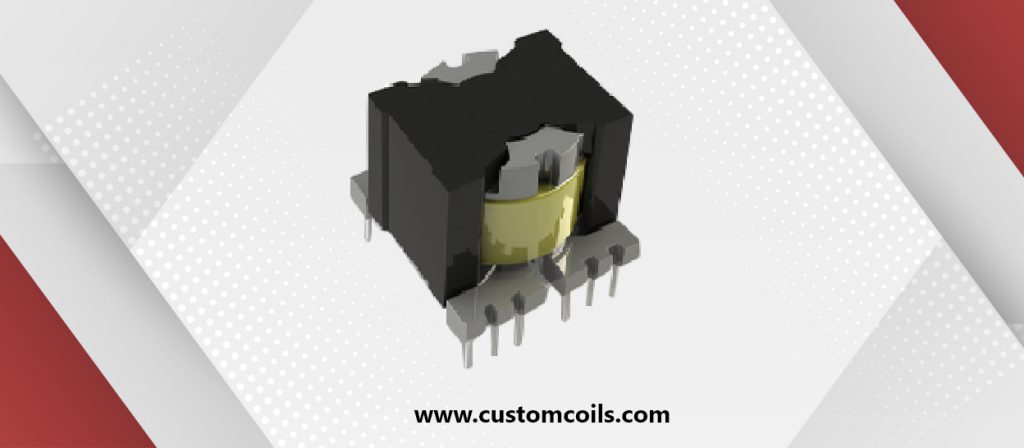Many power-intensive applications use powerful and fast electrical pulses in their load circuits. These pulse requirements cannot be fulfilled by regular step up and step down transformers, and this is where pulse transformers can make a difference. This is one of the most widely used transformer variants across industries. These transformers possess a compact structure, and assure excellent repetitiveness in power intensive applications. Is that all? No, there’s more to it. This post analyzes these transformers in detail including their types, designs, working, advantages and many more. Stay tuned?

Pulse Transformers and Their Types Explained
Pulse transformers are designed to transmit electric pulses at workable signals. The transformers act as an interface between a load and pulse forming network. They match the load impedance with the PFN, and this helps improve the power efficiency of these devices. Most pulse transformers transmit power and energy; however, pulse transformers also transmit digital information, which makes them quite different from regular transformers. These transformers are designed for specified pulse frequencies and peak voltages. They produce right-angle pulses, also known as square waveforms. In addition to digital transmission circuits, these transformers are also used in transistors in gate drive circuits. Generally, these transformers are used in circuits where output pulses are measured in very high wattage applications.
Pulse transformers are mainly distinguished into two types – signal and power based on their design.
- Power Transformers: These transformers are designed to change voltages from one level configuration to another. The power transformers are available as a single-phase primary configuration. These configurations also vary based on the connection of their winding.
- Signal Transformers: They transfer information between circuits through electromagnetic induction. Signal transformers increase or decrease voltage between the two sides of the transformer. In these transformers, the change in voltage is determined by the turn ratio of the number of windings.
Why Pulse Transformers Are Popular
These transformers have gained immense popularity over the years due to the following reasons:
- They provide high isolation voltages, which is why they are used in electrical isolation applications.
- These transformers possess the ability of high energy transfer. The energy is usually transferred efficiently with wide pulse width and short rise-time of the transformer. It has a highly permeable ferrite core, which helps minimize leakage inductance. The high voltage resistance of the transformer makes it ideal for large-scale applications.
- The transformers feature abrasive resins, which help minimize vibrations or electric resistance in the circuit. These abrasives are included as part of vacuum potting, and silicone rubber gel or thermo-setting plastics are common types of abrasives used.
- The windings of these transformers feature galvanic isolation between them, which helps prevent stray current passage through them. The isolation also enables the primary and secondary circuits to utilize separate potentials. The isolation ranges from 200 kV for high-power machines and 4 kV for small transformers.
- Pulse transformers possess a generous number of windings and use many transistors at a time. This helps minimize delays or phase shifts and leads to lesser turns than other transmitters. Less turns may mean high power and less resistance.
Important Pulse Transformer Specifications
These transformers are defined on the basis of the following factors:
- Rise Time (Tr): It is the time taken by the output signal to enhance its peak pulse amplitude from 10% to 90%.
- Pulse Amplitude: This is the highest peak value achieved from the signal apart from insignificant spikes.
- Pulse Width: This is the time interval between the first and the last instant where the amplitude reaches 50% of the peak amplitude.
- Overshoot: This is the output signal which is greater than the peak amplitude.
- Fall Time (Tf): This is the time taken by the output signal to reduce its peak amplitude from 90% to 10% throughout the trailing edge response. This time is also known as decay time.
- Droop: It is also known as tilt, and it refers to a displacement of pulse amplitude through the level response.
- Backswing: A part of the trailing edge that expands under the zero-level amplitude is known as the backswing.
Applications of Pulse Transformers Discussed
Pulse transformers generally find applications in the following circuits:
- Semiconductors
- Radar
- Laser systems
- Medical equipment
- Transmission lines
- Telecommunication circuits
- Vacuum applications
- Analog switching circuits
- Microwave tube circuits and more
Gaining knowledge on diverse aspects of these transformers is indeed helpful if you have been planning to invest in them. However, it is equally important to partner with a trusted and experienced supplier like Custom Coil. The company provides custom pulse transformers in tailored specifications. By choosing the product from the company, clients can receive various benefits such as vacuum potting, ground shielding, high voltage resistance, partial discharge effects, and a wide selection of ignition currents, turn ratios, and voltages. You can get in touch with the team at Custom Coils to discuss your pulse transformer requirements. The experts will assist you in choosing the right designs and specifications.
